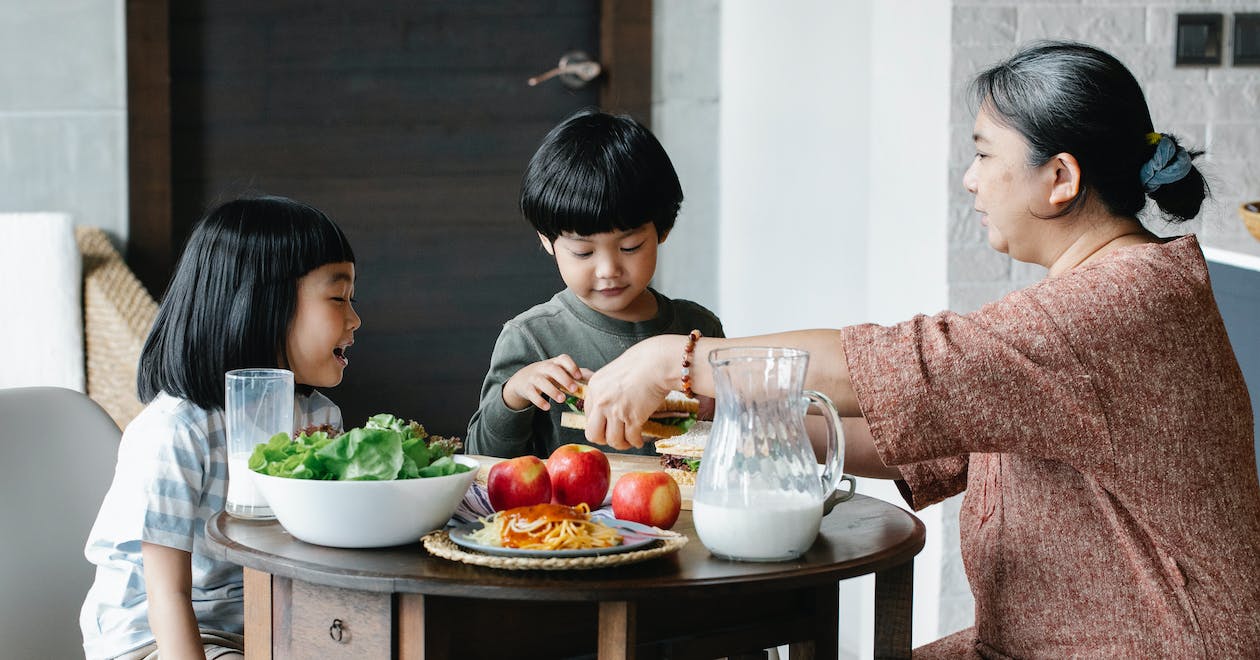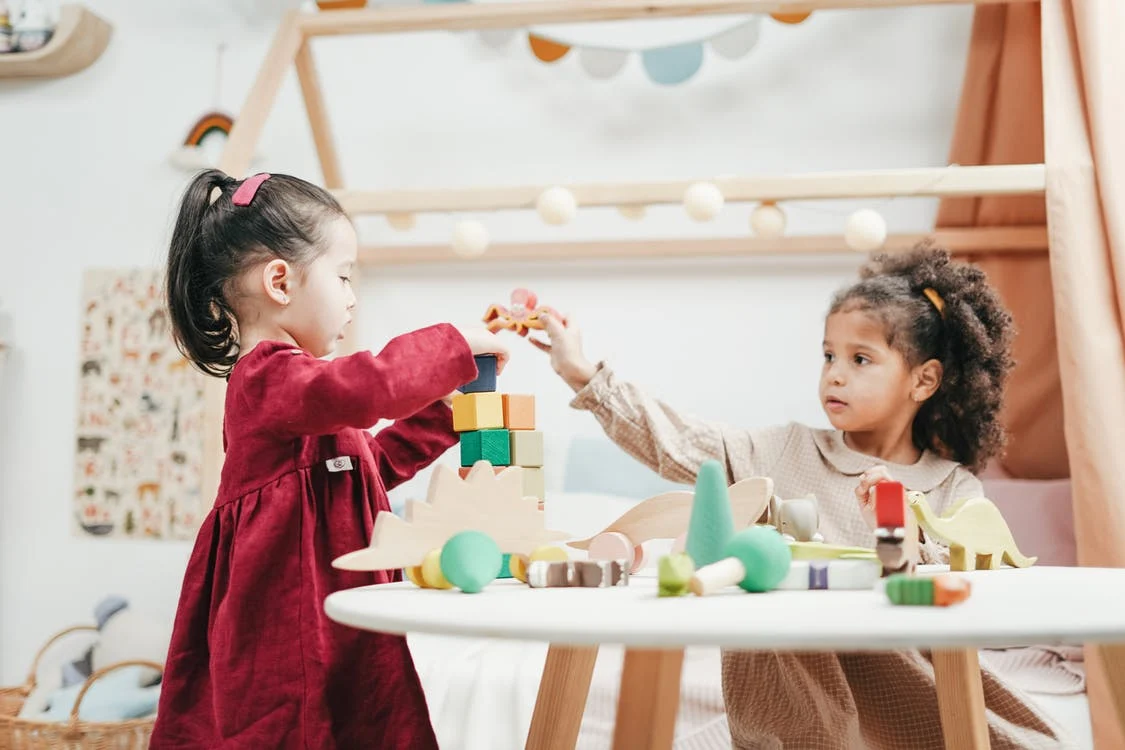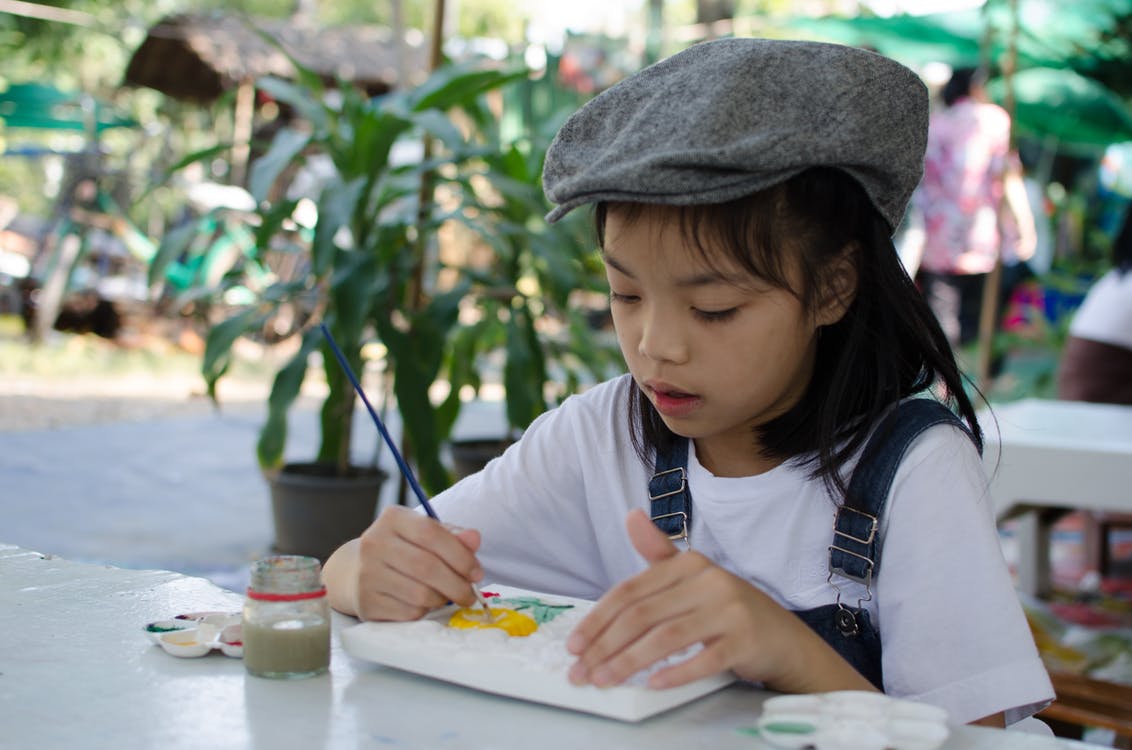The Educational Benefits of Painting for School-Aged Children

Painting is often seen as merely a fun activity for children, but it offers substantial educational benefits. Engaging in painting helps children improve fine motor skills and enhances visual coordination, which can positively impact their academic performance. Additionally, painting fosters creativity, encouraging children to think innovatively and solve problems uniquely. It also provides an emotional outlet, allowing children to express and process complex feelings effectively. Furthermore, painting plays a crucial role in developing social skills and fostering an appreciation for art. Through collaborative projects and discussions about their artwork, children learn to communicate, share, and understand different perspectives, enriching their social interactions and deepening their appreciation for the arts.
Enhancing Fine Motor Skills
Painting significantly enhances school-aged children's fine motor skills by requiring precise control and coordination. When a child picks up a paintbrush, they are not just creating art; they are also improving their ability to make small, controlled movements. This activity strengthens hand muscles and improves dexterity, essential for everyday tasks.
Manipulating brushes and tools demands precision, aiding in the development of better hand-eye coordination. As children blend colors and create detailed shapes, they learn to synchronize their hand movements with their visual input. This synchronization is crucial for other activities, such as writing and drawing, where precision is key.
Furthermore, painting encourages children to focus on control and coordination. Each brushstroke requires careful attention, prompting them to refine their movements. This practice not only enhances their ability to control small muscles but also improves their overall spatial awareness and attention to detail.
Boosting Visual Coordination
Engaging in artistic activities like painting significantly enhances visual coordination in school-aged children. Painting activities improve hand-eye coordination as children make precise movements to create their artwork, aiding in developing essential visual-motor skills needed for tasks such as writing and drawing.
Here are specific ways painting activities boost visual coordination:
- Brush Strokes: Controlling brush strokes refines the connection between visual perception and hand movement.
- Coloring Within Lines: Staying within lines enhances focus on eye-hand coordination.
- Mixing Colors: Mixing colors requires careful observation and precise movements, further developing coordination skills.
- Detail Work: Adding small details sharpens the ability to synchronize visual input with motor movements.
Through painting, children not only enjoy a creative outlet but also improve their visual coordination abilities. This engaging activity fosters the development of vital coordination skills, aiding in various academic and everyday tasks. Regular participation in painting activities helps continually refine and strengthen visual-motor skills.
Fostering Creativity
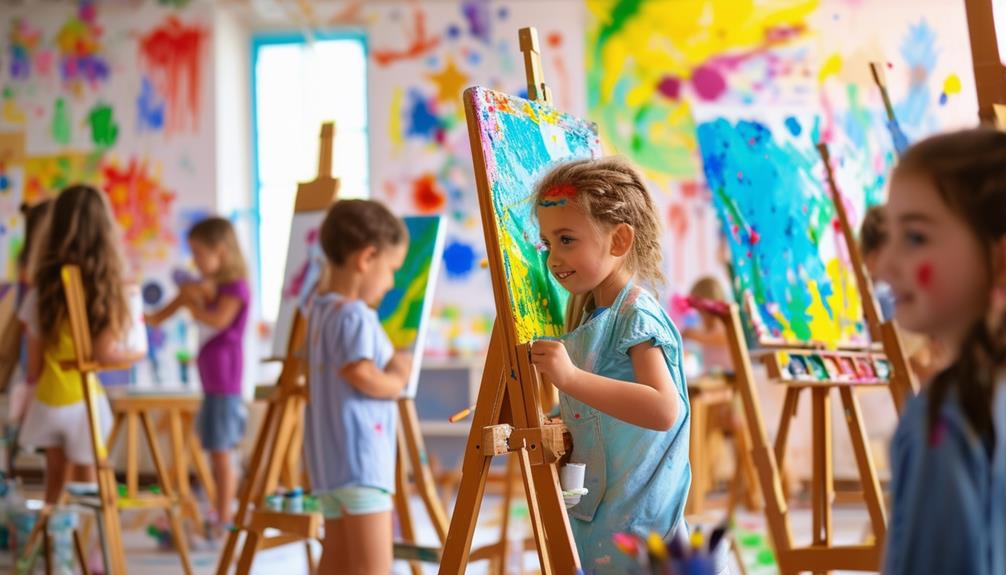
By engaging in painting, children tap into their creative potential and explore new ideas visually. Participating in creative activities like painting allows kids to experiment with color, texture, and composition, thereby enhancing their creative thinking skills. Art education helps children develop problem-solving abilities as they navigate artistic decisions, such as selecting color combinations or figuring out how to depict specific scenes.
Painting encourages children to think outside the box and develop original solutions to artistic challenges. This creative process fosters originality and strengthens fine and gross motor skills. By manipulating brushes and mixing paints, they improve their dexterity and coordination, which are crucial for other academic and life tasks.
Additionally, painting helps children develop a unique artistic style, showcasing their individuality and creativity. Art education offers a platform for them to express personal visions and ideas, laying the foundation for a lifelong appreciation of the arts. Thus, painting is not just a pleasurable activity; it is an essential component of a well-rounded education that promotes creativity and skill development in school-aged children.
Emotional Expression
When children pick up a paintbrush, they discover a powerful way to express emotions that words often can't capture. Painting allows them to visually represent their feelings, experiences, and perceptions, which is especially beneficial when they're grappling with complex emotions. Through artistic expression, children gain a healthy outlet to process and communicate their emotions effectively.
Consider these scenarios:
- A child painting a stormy sea to symbolize feelings of anger or frustration.
- Bright, vivid colors splashed across the canvas to convey joy and excitement.
- Gentle, flowing lines that reflect feelings of calm and serenity.
- Abstract shapes and forms representing confusion or mixed emotions.
Developing Cognitive Abilities
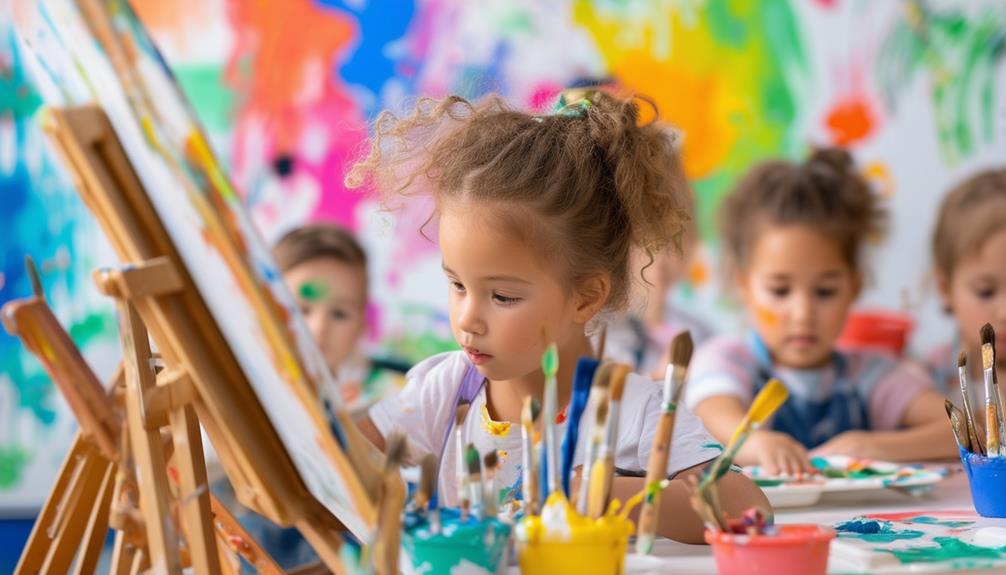
Children's cognitive abilities flourish when they engage in painting. Beyond creating art, painting helps develop crucial cognitive skills. It enhances problem-solving, critical thinking, and creative potential. By concentrating on details and colors, children improve their attention to detail and visual-spatial skills.
Research shows that painting benefits memory retention and imagination. Exploring color theory and composition strengthens analytical and decision-making skills. Painting encourages experimentation and discovery, fostering cognitive growth.
Promoting Social Skills
When children participate in painting activities, they collaborate with peers, enhancing their social skills. Group art projects encourage effective communication and teamwork. Through these interactions, children build relationships and learn the value of empathy and cooperation.
Collaborative Art Projects
Participating in collaborative art projects, such as group paintings, helps school-aged children develop essential social skills like teamwork and communication. Engaging in these activities teaches kids to share ideas, compromise, and solve problems together, fostering cooperation and empathy crucial for building strong interpersonal relationships.
Consider a classroom where children work together on a large mural. You'll observe:
- Children discussing and sharing creative ideas
- Small groups blending colors and deciding on designs
- Peers assisting each other with painting techniques
- Students negotiating roles and responsibilities
These projects enable kids to appreciate diverse perspectives and work towards a common goal. By valuing each other's input, children gain a deeper understanding of collaboration, enriching their social skills and promoting a sense of community and belonging.
Moreover, creating a collaborative painting allows children to experience the joy of collective achievement. Each brushstroke contributes to a larger masterpiece, teaching the importance of teamwork. These experiences lay a solid foundation for future social interactions and cooperative endeavors.
Peer Interaction Enhancement
Collaborative art projects naturally enhance peer interactions, promoting essential social skills among school-aged children. When kids engage in group painting activities, they not only create art but also develop crucial collaboration skills. Painting with peers encourages clear communication and active listening, key components of effective teamwork.
As children work together on a painting, they learn to share materials and ideas, fostering a sense of community and cooperation. This shared experience teaches them to respect others' work and opinions, pivotal for healthy peer interaction. By taking turns and discussing their artistic choices, they develop patience and empathy.
Moreover, these collaborative projects provide a platform for children to practice social skills in a fun and relaxed environment. They become more adept at negotiating roles and responsibilities within the group, enhancing their ability to work as part of a team. The skills gained through these interactions extend beyond the art room, helping children navigate various social situations in their daily lives. Encouraging your child to participate in group painting activities not only nurtures their creativity but also equips them with valuable social skills.
Encouraging Art Appreciation

Introducing children to diverse artistic styles and techniques can ignite a lifelong appreciation for art. Encouraging art appreciation helps children delve into the rich world of art history and understand the cultural influences that shape it. This not only broadens their horizons but also fosters critical thinking skills. Analyzing different artworks sharpens their ability to interpret and critique, encouraging them to see beyond the surface.
To make art appreciation engaging, consider these activities:
- Visit art museums and galleries: These outings provide firsthand exposure to masterpieces and contemporary works alike.
- Discuss artwork: Talking about different pieces with children promotes dialogue, empathy, and a broader perspective.
- Explore diverse art movements: Learning about periods like the Renaissance or Impressionism helps kids see the evolution of artistic expression.
- Create art inspired by renowned artists: Encourage children to mimic styles from artists like Van Gogh or Picasso, fostering a hands-on understanding.

